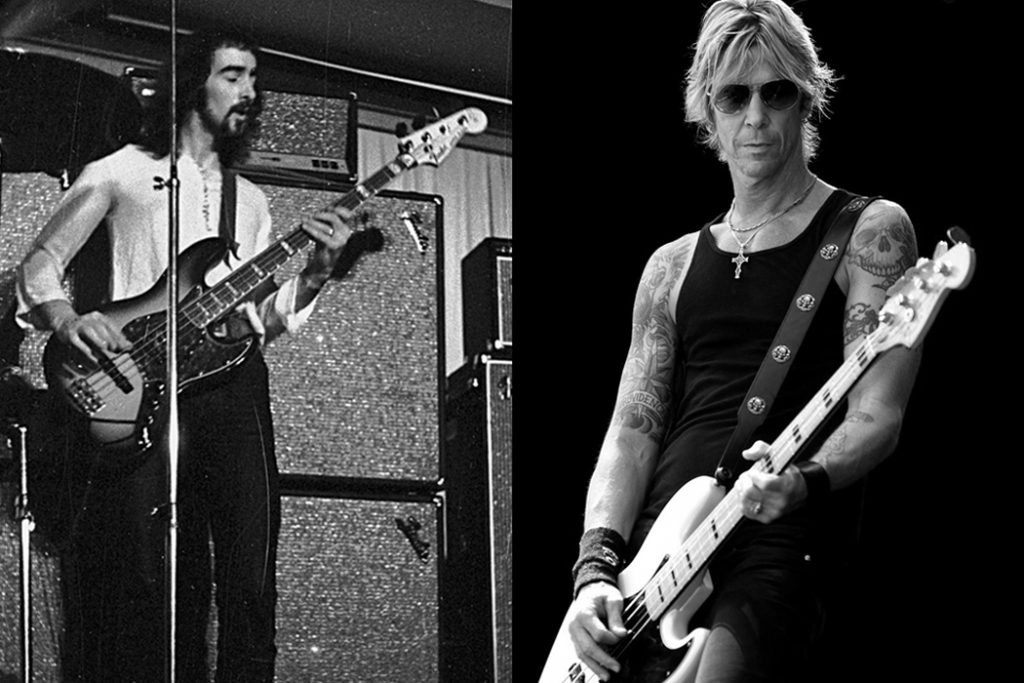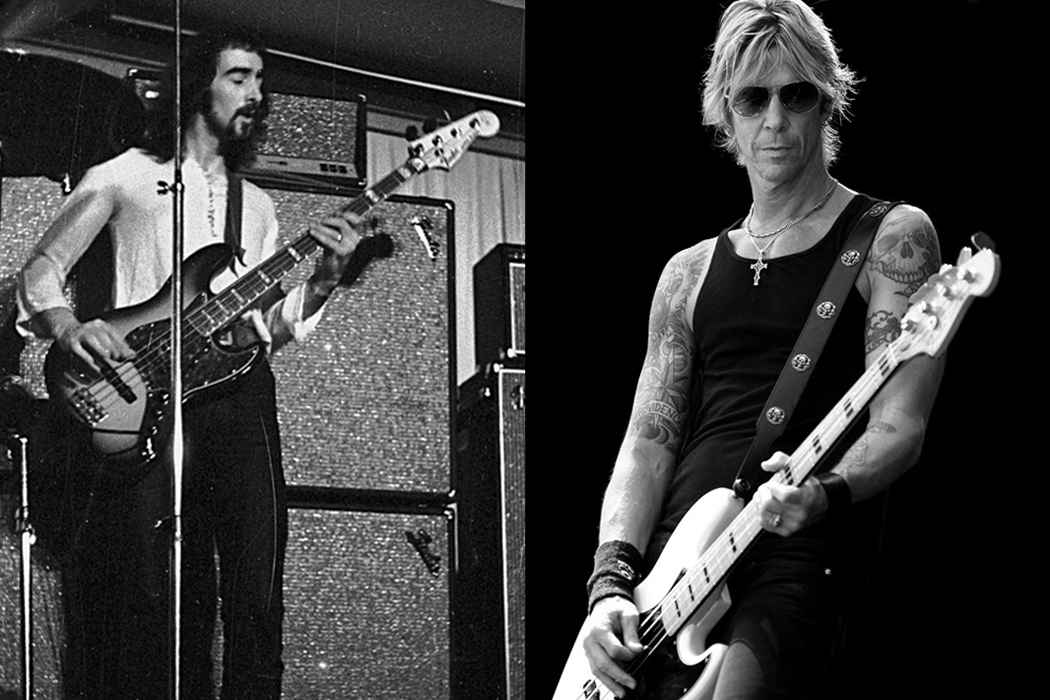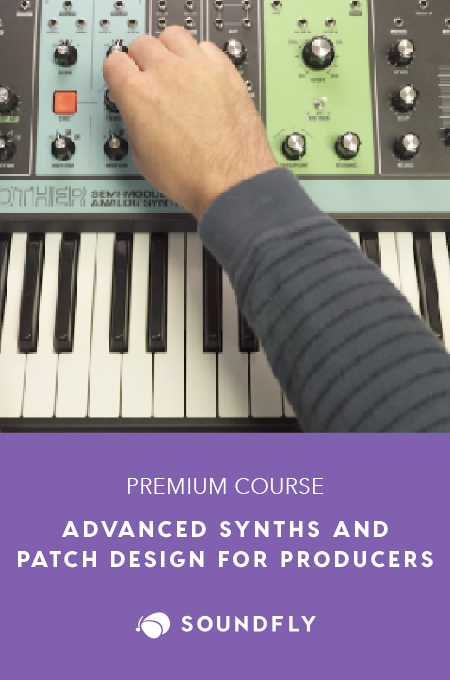+ Welcome to Soundfly! We help curious musicians meet their goals with creative online courses. Whatever you want to learn, whenever you need to learn it. Subscribe now to start learning on the ’Fly.
By Daniel Martin
How much does the general public really pay attention to bass riffs? I’m not talking about songs in which the bass has the main hook, like Queen’s “Another One Bites the Dust” or Lou Reed’s “Walk on the Wild Side” where the bass is technically the lead instrument, nor am I talking about every disco hit ever. How much do people really take the time to hear through what’s going on in the rest of the mix to find what the bass is doing?
For one, the wonderful basslines of Motown make it easy. And standout players in genres like funk, soul and neo-soul, R&B, and prog rock also make it fun to examine that low-end magic happening just beneath the surface. But throughout the 1960s and ’70s, where the songwriter reigned as king — seconded (if even) only by that of the heaven-descended lead guitarist — bassists were mostly criminally ignored.
So I wanted to pluck out a bunch of very famous songs from between the ’60s and ’80s where these stalwart rhythm-section warriors were able to eek out a few moments of their own in the limelight — those fleeting moments where any listener can catch the bass filling an iota of space very cleverly, or otherwise blending particularly well with the vocal, lead guitar, or other instrument. We’ll also examine the melodic techniques used in each case.
To learn a bit more about how to write bass grooves that lock together with the rest of the rhythm section, check out Soundfly’s free short course, Writing Funk Grooves for Drums and Bass. Enjoy!
1. The Beatles – “I Wanna Hold Your Hand”
Chromatic connecting riff between the V and VI- chords of the verse lines
The very first time I can recall hearing this song on my parents’ turntable, I was struck by that groovy little bass riff between the lyric lines “tell you something” and “I think you’ll understand,” and repeated throughout the verses in the same spot. What makes this little flurry of notes so clever is the sudden change in meter (coming out of the slow, steady rocking on the root and sometimes the fifth) and the double emphasis on the leading tones.
A mere mortal bass player might have connected the V chord to the VI- by playing the note in between the roots of each. But Paul McCartney starts the sequence two beats early, playing the root of the V and going down a half step before his three-note climb, resulting in a five-note run that fills out the entire gap in the vocals. Of course, little did I know at the time that this famous mop-top had gone on to be one of the most influential bass players ever.
2. Aerosmith – “Walk This Way”
The high note riff in the post-chorus jam
Tom Hamilton’s signature riff may be “Sweet Emotion,” but there are so many other songs where his sheer bass heroics are overshadowed by Joe Perry’s monster riffs. If you listen closely to one of the mid-song guitar solos in “Walk This Way,” counting off six beats after the line, “Just give me a kiss,” you’ll hear Hamilton’s gorgeous slide up the neck up to a trill-like sequence at the octave, ending with a three-note chromatic run to the major third above it.
In a song known for its supremely catchy guitar riff (what else is new?), this is Hamilton’s moment of rising up to say, “Hey, don’t forget about the bass… it’s flashy, too!” The high run works particularly well juxtaposed against the lower notes he’s played up to that point in that section (which is basically the same riff as in the verses). Specifically, the vamping on C, then dropping down to the open E and walking up chromatically to the fifth below it (G), makes the shooting up to the next octave C and climbing up to the E above it sound really great together.
3. Guns N’ Roses – “Sweet Child O’ Mine”
The intro and countermelody
Here’s a winning formula: the guitar starts out with the song’s main riff, completing a full cadence, before the bass ensues with a countermelody high up on the neck, building up a suspenseful intro until the drums kick in and carry the song into its full tempo. “Hotel California” operates the same way.
In Duff McKagan’s case, after following Slash’s classic intro with a standard climb from the root to the fifth via the major third and perfect fourth of the scale, he returns frequently back to his fifth, and repeatedly makes use of that fourth-to-major-third-to-root motif. It works beautifully alongside the main guitar riff, but McKagan always seems to shine in song intros.
4. Foghat – “Slow Ride”
The slap and pop during the verses
Nick Jameson’s story is almost as interesting as this song’s bass part itself. After having previously worked as a producer for the band, Jameson was invited to become their new bass player. Mainly a guitarist up to that point, he had to learn quickly. But thanks in part to some of his influences, like jazz-fusion guru Stanley Clarke, he pulled off learning the material. Not long after, “Slow Ride” was born out of a jam session. Jameson’s chops on the song are pretty remarkable, considering he was still a bit of a novice on the instrument at the time.
Following some standard doubling of the main guitar riff during the song’s introductory chorus, Jameson erupts with some root-octave slapping in the verse. He follows this with a couple high pops up on the neck and a slide down to the relative minor. The pulsation of F# with the fifth below it and alternating with the A just above it generates a funkier feel than you’d ever expect from a hard rock song with a simple three-note guitar hook. The sequence is repeated several times in the verse and, in spite of all the other cool riffs in this song, leaves you wanting to hear more.
Unfortunately, Jameson is probably now better known as the Russian President on three seasons of the TV show 24 than as “the dude who shredded on ‘Slow Ride.’”
5. Led Zeppelin – “Over the Hills and Far Away”
The arpeggios transitioning out of the guitar solo
Sometimes the bass sounds great merely doubling what is being played on the guitar — and especially when that guitar is being played by Jimmy Page. John Paul Jones actually had tons of bass-hooky songs, but here in “Over the Hills and Far Away,” the bass is a bit subdued throughout most of it — which makes this particular section stand out even more. That section is when Page climbs out of his solo with a three-octave arpeggiated run, and Jones follows alongside with a standard pattern of root-third-fifth-minor seventh across each octave, a mixolydian theme that would sound good in basically any context.
The odd timing, as the sequence starts on the “4” beat of the end of the solo, instead of the expected “1” beat, catches the ear off guard and adds to the mystical feel of this little interlude. The icing on the cake can be tasted when the bass doubles the notes from octaves below it — though at the start of the third octave, Jones dips back to the third below it, and finishes his last arpeggio back at the top of the second octave, instead of continuing on to the top of the third with Page. It’s a wise decision, as the widening gap in pitches helps accentuate the guitar’s rise to its zenith.
+ Learn production, composition, songwriting, theory, arranging, mixing, and more — whenever you want and wherever you are. Subscribe for unlimited access!
6. The Beach Boys – “Good Vibrations”
The chorus riff doubling the vocals
Speaking of doubling, here’s a great example of bass and vocals finding unison. Carol Kaye was a member of “the Wrecking Crew,” the famous group of LA-based studio musicians who played on numerous hit recordings throughout the ’60s and ’70s. Their cumulative work on several Beach Boys hits, including the legendary Pet Sounds album, is an important chapter in rock history.
One of Kaye’s signature riffs occurs here during the “I’m picking up good vibrations” refrain. By singer Mike Love’s own admission, he sang the notes of the vocal riff to double the bass riff, not the other way around, but the two parts sync so well together. This helps make the bass line so recognizable.
The riff itself starts out on the root, jumps up to the octave and walks down a full step, and then a half step before dropping back down to the root and beginning a walk back up. Layer that with some aggressive cello triplets, and a soaring electro-theremin riff, and you’ve got the backbone of what Brian Wilson called a “pocket symphony.”
7. Fleetwood Mac – “The Chain”
The outro riff, introduced in the middle and repeated
In a song that was spliced together from the independent compositions of different feuding band members, John McVie’s contribution takes prominence here at the end. Played along an E minor scale, it starts with a long A and ascends to the C, before descending via a run of notes to resolution on the E. Simple yet effective, especially with the repetition, it builds up with intensity into a driving tempo over Mick Fleetwood’s drums. But one thing that shouldn’t be overlooked is how much musical tension is created between the bass and the lead guitar as a result of what I call “reverse” pedal point.
A typical pedal point segment places a bass instrument repeating an ostinato or sustaining a single note against the lead instrument, moving in harmony or independent of it. In the outro of “The Chain,” this relationship is reversed, as Lindsey Buckingham’s guitar crescendos with what sounds like the open high-E string, and repeats while McVie’s bass line moves around akin to a lead guitar part.
8. The Who – “Won’t Get Fooled Again”
The walk-down to the root in the chorus
John Entwistle almost didn’t make this list, by virtue of being, well, too good. There are so many great Who songs to choose from, but one melody that tends to stick in my head is the pentatonic major run heard behind the “I tip my hat” refrain in this song. The riff starts at the relative minor and runs down to the root, hitting all five notes of the scale. It’s a simple sequence, but I’ve noticed that scalar walk-downs to the root pretty much always sound good on the bass. (For example, check out the choruses of the Beatles’ “Helter Skelter” and Kiss’ “Shout It Out Loud”). Entwistle repeats this motif several times throughout the chorus with slight variations that keep it continually compelling.
In the live version above, he almost looks bored while he absolutely shreds — especially in comical contrast to the insane antics of his eccentric bandmates.
9. The Cars – “Let’s Go”
The double chromatic walk-up to an octave in the post-chorus
New wave and post-punk era bassists did a lot of single-note chugging on root notes of chords. No offense to them; it’s what the music called for. As a consequence, bass players in those genres, like Peter Hook, Adam Clayton, and John Taylor, tend to be pretty underrated. But those minimalist bass parts actually did allow room for some subtle fill-ins to really stick out.
One such example is here in “Let’s Go,” where bassist Benjamin Orr does a double chromatic run in the interlude at the end of the chorus and leading into the “She’s laughing inside” verse. It’s a simple, basic riff, starting at the major third, walking up three notes to the fifth, and continuing with another four-note chromatic run up to the octave. It comes at an opportune moment, building up the suspense leading into the last set of verses, in an already high-tempo, high-energy song.
10. Eurythmics – “Would I Lie to You”
Various walk-ups to the fifth in the main riff
Decades before he was laying down the bass track for Daft Punk’s “Get Lucky,” consummate studio session man Nathan East was playing on hit records left and right. A song that is a little bit hard rock, a little bit R&B, done by a band that until then was sort of new-wave-ish, “Would I Lie to You” seems like a fitting way to end this list.
The bass blends well in this mix and grooves solidly throughout the whole song. But one recurring motif that sticks out, perhaps because of the space created by the choppy, Kinks-esque guitar riff, is the simple walk-up to the fifth (an E over the A chord) via the major third and perfect fourth. It happens after the first four chords (which, on their own, actually sound like a rewrite of “You Really Got Me”), and tucks nicely into place as the short D and A guitar chords follow it and carry the end of the measure into the G and C chords of bars 3 and 4. The pattern is repeated over these bars, and basically everywhere else in the song involving the main guitar riff, though East varies it almost every single time with masterful subtlety.
And those last two words may best describe what I love most about listening to the bass.
Want to get all of Soundfly’s premium online courses for a low monthly cost?
Subscribe to get unlimited access to all of our course content, an invitation to join our members-only Slack community forum, exclusive perks from partner brands, and massive discounts on personalized mentor sessions for guided learning. Learn what you want, whenever you want, with total freedom.
—
 Daniel Martin is a songwriter, multi-instrumentalist, guitar instructor, and rock historian from Lancaster, PA. His music-related articles have been published on Counterpunch and Perfect Sound Forever. His band, Marty’s Invasion, has “invaded” multiple cities on the East Coast.
Daniel Martin is a songwriter, multi-instrumentalist, guitar instructor, and rock historian from Lancaster, PA. His music-related articles have been published on Counterpunch and Perfect Sound Forever. His band, Marty’s Invasion, has “invaded” multiple cities on the East Coast.






